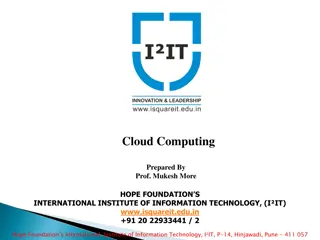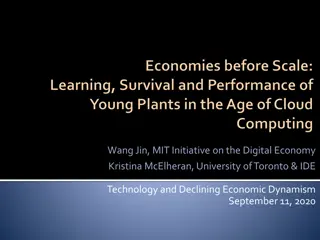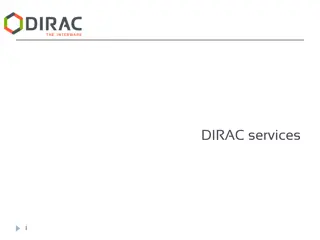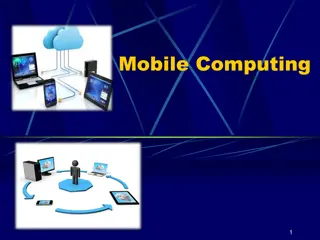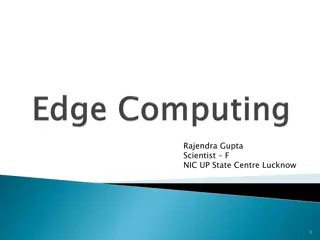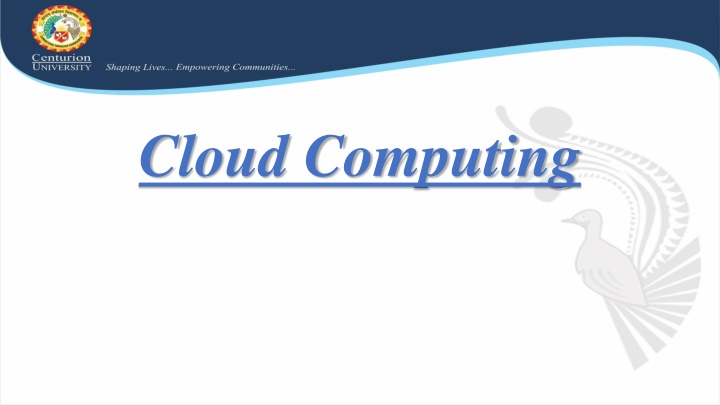
Introduction to Cloud Computing: Overview, Applications, Advantages, and More
"Discover the significance of cloud computing across various sectors, its applications, benefits, and characteristics. Learn why businesses and organizations are increasingly adopting cloud services for efficient operations."
Download Presentation

Please find below an Image/Link to download the presentation.
The content on the website is provided AS IS for your information and personal use only. It may not be sold, licensed, or shared on other websites without obtaining consent from the author. If you encounter any issues during the download, it is possible that the publisher has removed the file from their server.
You are allowed to download the files provided on this website for personal or commercial use, subject to the condition that they are used lawfully. All files are the property of their respective owners.
The content on the website is provided AS IS for your information and personal use only. It may not be sold, licensed, or shared on other websites without obtaining consent from the author.
E N D
Presentation Transcript
CONCEPTS CONCEPTS Introduction to Cloud Computing. Advantages and Disadvantages of Cloud Computing
Introduction Introduction One of the most important and highly useful invention in the technical advancement is cloud computing. It facilitates its services in almost all sectors based on computer applications. For instance, in a present pandemic situation caused by COVID-19, most of the companies, organizations, business firms of both private and government sectors throughout the globe are using the cloud computing applications for smooth running of their activities. In particular, the online teaching tools are playing major role in the educational system. The application of cloud computing is not limited to a particular sector, it covers almost all sectors. So, in this context, an overview of cloud computing and its applications are discussed in present article.
Cloud computing is the way to access computing technique through internet. It consists of both software and hardware services, so that the user can locate easily anywhere in the world. . Recently, academics as well as business industries paid a great deal of attention to cloud computing. The main objective of cloud computing is to reduce the cost of application tools and provide 24X7 hours online services to the user.
What is Cloud computing? What is Cloud computing? The term cloud refers to a network or the internet. It is a technology that uses remote servers on the internet to store, manage, and access data online rather than local drives. The data can be anything such as files, images, documents, audio, video, and more. There are the following operations that we can do using cloud computing: Developing new applications and services Storage, back up, and recovery of data Hosting blogs and websites Delivery of software on demand Analysis of data Streaming videos and audios
Why Cloud Computing? Small as well as large IT companies, follow the traditional methods to provide the IT infrastructure. That means for any IT company, we need a Server Room that is the basic need of IT companies. In that server room, there should be a database server, mail server, networking, firewalls, routers, modem, switches, QPS (Query Per Second means how much queries or load will be handled by the server), configurable system, high net speed, and the maintenance engineers. To establish such IT infrastructure, we need to spend lots of money. To overcome all these problems and to reduce the IT infrastructure cost, Cloud Computing comes into existence.
Characteristics of Cloud Computing: Characteristics of Cloud Computing: The characteristics of cloud computing are given below: a) Agility The cloud works in a distributed computing environment. It shares resources among users and works very fast. b) High availability and reliability The availability of servers is high and more reliable because the chances of infrastructure failure are minimum. c) High Scalability Cloud offers "on-demand" provisioning of resources on a large scale, without having engineers for peak loads.
d) Multi-Sharing With the help of cloud computing, multiple users and applications can work more efficiently with cost reductions by sharing common infrastructure. e) Device and Location Independence Cloud computing enables the users to access systems using a web browser regardless of their location or what device they use e.g. PC, mobile phone, etc. As infrastructure is off-site (typically provided by a third-party) and accessed via the Internet, users can connect from anywhere.
f) Maintenance Maintenance of cloud computing applications is easier, since they do not need to be installed on each user's computer and can be accessed from different places. So, it reduces the cost also. g) Low Cost By using cloud computing, the cost will be reduced because to take the services of cloud computing, IT company need not to set its own infrastructure and pay-as-per usage of resources. h) Services in the pay-per-use mode Application Programming Interfaces (APIs) are provided to the users so that they can access services on the cloud by using these APIs and pay the charges as per the usage of services.





